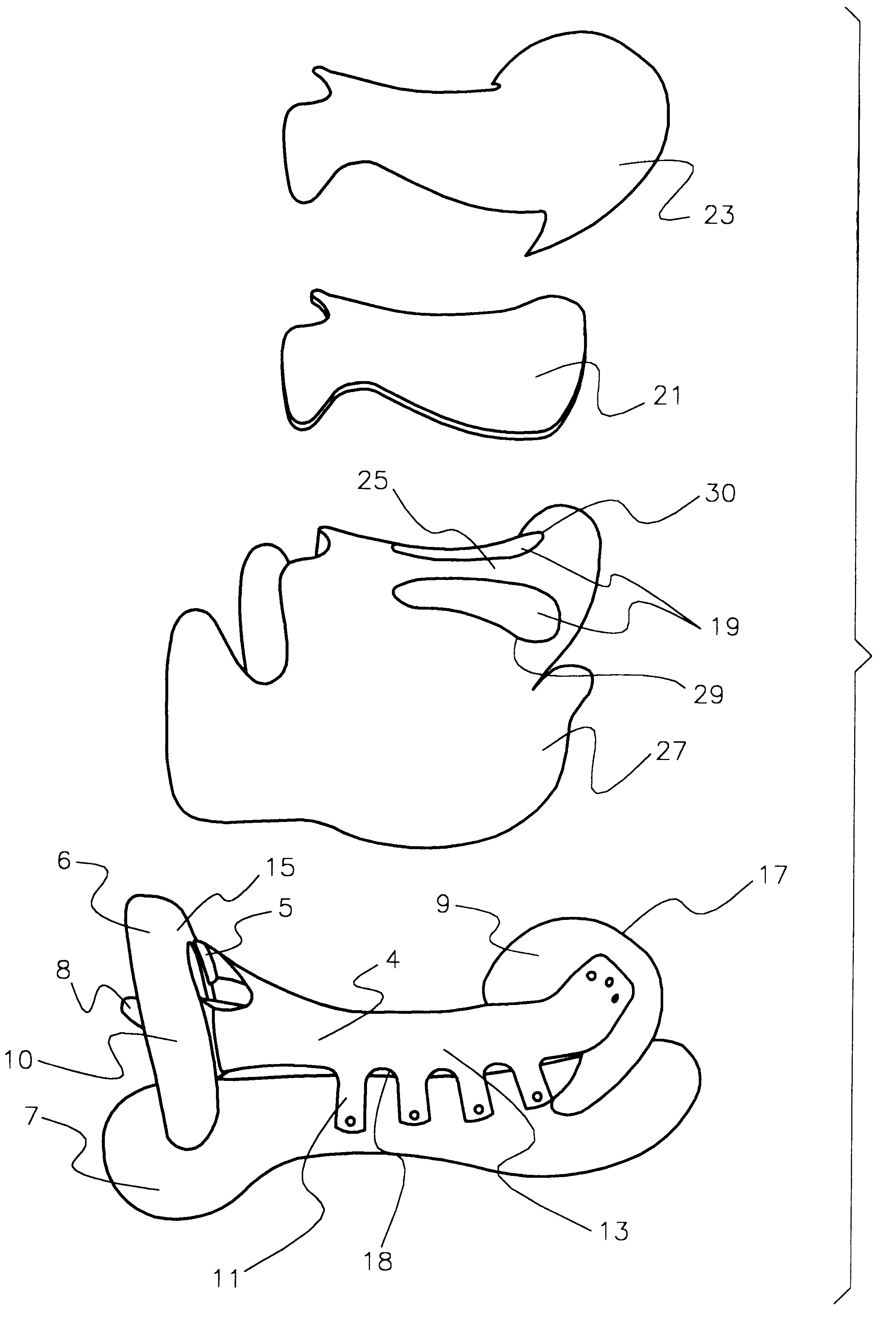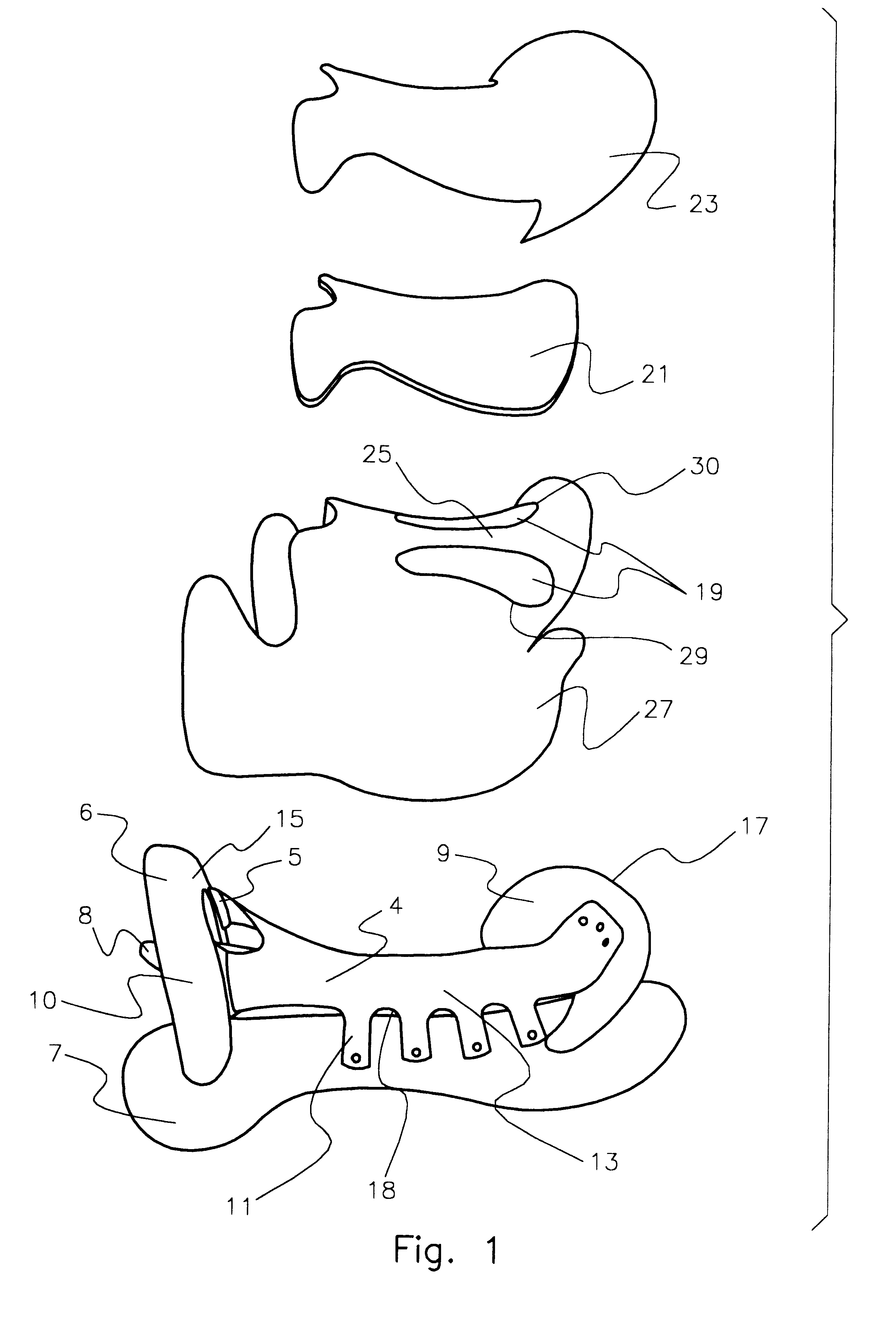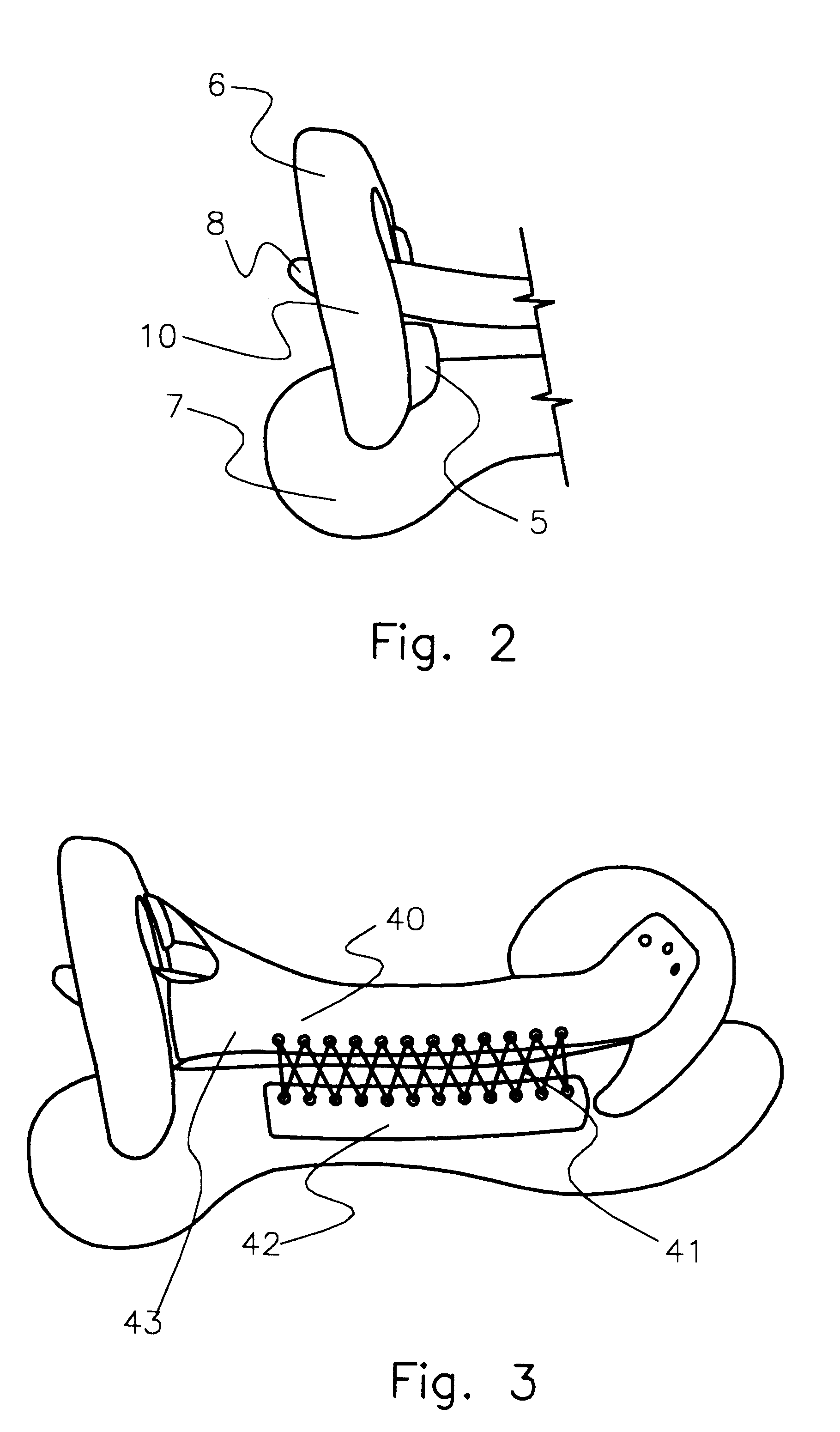Shock absorbing anatomically sculptured saddle seat
a saddle seat and anatomical sculpture technology, applied in saddles, applications, domestic applications, etc., can solve the problems of rigid seat base, no means of absorbing, no means of shock absorption,
- Summary
- Abstract
- Description
- Claims
- Application Information
AI Technical Summary
Problems solved by technology
Method used
Image
Examples
Embodiment Construction
Description
Referring to FIG. 1 and FIG. 2, the saddle is made up of a saddle tree 10, which includes left and right bars 7 and 8, respectively, front section 6, and rear or cantle 9. These tree components are of conventional tree materials such as wood or plastic and joined together with conventional joining means such as screws, glue, or other assembly techniques.
The base seat section 4 is a single piece of flexible material approximately 1 / 4" thick and of medium rigidity. The base seat section 4 length relates to the saddle tree 10 dimension and determines the "seat size". The "seat size" is determined by measuring the distance between the back center 15 of the front section 6 of the saddle tree 10 and the front center of the top of the cantle 17 in a straight line. The length of the main body 13 of the base seat section 4 is 5" longer than the saddle tree 10 "seat size".
The base seat section 4 has eight side tabs 11 each being 11 / 8" wide and extending 21 / 2" in a 45 degree angle p...
PUM
 Login to View More
Login to View More Abstract
Description
Claims
Application Information
 Login to View More
Login to View More - R&D
- Intellectual Property
- Life Sciences
- Materials
- Tech Scout
- Unparalleled Data Quality
- Higher Quality Content
- 60% Fewer Hallucinations
Browse by: Latest US Patents, China's latest patents, Technical Efficacy Thesaurus, Application Domain, Technology Topic, Popular Technical Reports.
© 2025 PatSnap. All rights reserved.Legal|Privacy policy|Modern Slavery Act Transparency Statement|Sitemap|About US| Contact US: help@patsnap.com



